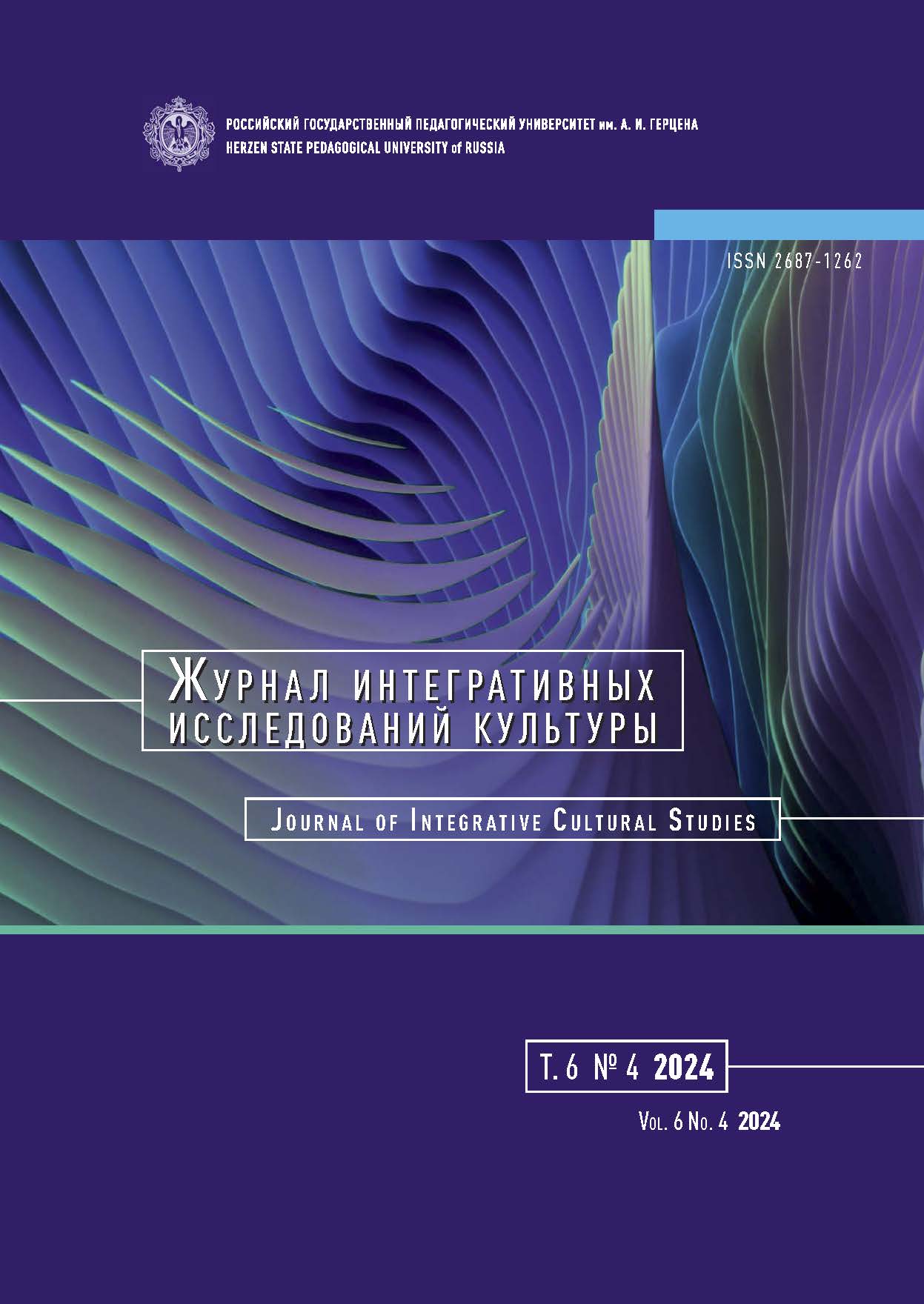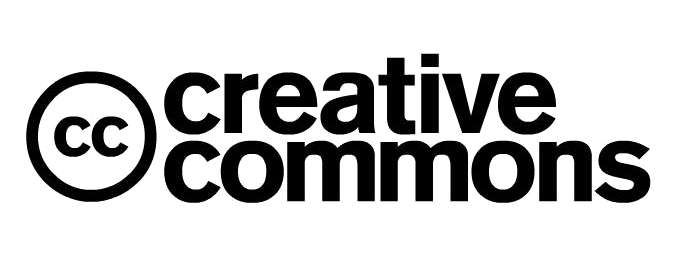The phenomenon of understanding in F. M. Dostoevsky’s novel The Adolescent from the perspective of ‘Working Notes from the 1960s and Early 1970s’ by M. M. Bakhtin
DOI:
https://doi.org/10.33910/2687-1262-2024-6-4-327-334Keywords:
phenomenon of understanding, F. M. Dostoevsky, novel The Adolescent, M. M. Bakhtin, ‘Working Notes from the 1960s and Early 1970s’Abstract
This article analyses how the phenomenon of understanding in F. M. Dostoevsky’s novel The Adolescent manifests itself at the level of poetics (specificity of the word, plot, composition and event) and meanings. Our research builds on a lexical analysis of the text. We apply the hermeneutic principle of representing the whole through its part to an aspective analysis of Part 1 of Chapter 5 in Part 2 of the novel. We found out that, firstly, the phrase ‘to understand only too well’ is individual (the contexts in which Dostoevsky uses this combination point to a capacity for special insight, an ability to see the ‘invisible’, the depth of an insight into another person’s soul and the tormenting awareness of a tragedy); secondly, some of its features refer to M. M. Bakhtin’s concept of ‘active dialogical understanding’. This concept is intrinsic to the philosophical oeuvre of this researcher as a whole, but is central to his ‘Working Notes from the 1960s and Early 1970s’. This piece of writing not only develops the topic of understanding in its various aspects but also brings out the process of understanding, so characteristic of its author. We show that the process of ‘active dialogical understanding’, typical of both artistic (Dostoevsky’s) and aesthetic-philosophical (Bakhtin’s) texts, contributes to their integrity. This proves once again that Bakhtin did not focus on Dostoevsky’s texts to materialise any philosophical idea of his own, but because of the attention to the knowledge of the basic laws of consciousness and development of a comprehensive personality which he had discovered in Dostoevsky’s fiction and which was so close to him.
References
ИСТОЧНИКИ
Бахтин, М. М. (2002) «Проблемы поэтики Достоевского». Работы 1960-х–1970-х гг. В кн.: Собрание сочинений: в 7 т. Т. 6. М.: Русские словари; Языки славянских культур, 800 с.
Достоевский, Ф. М. (1975) Подросток. В кн.: Полное собрание сочинений: в 30 т. Т. 13. Л.: Наука, 456 с.
Достоевский, Ф. М. (1976) Подросток. Рукописные редакции. В кн.: Полное собрание сочинений: в 30 т. Т. 16. Л.: Наука, 440 с.
Национальный корпус русского языка. (2024) [Электронный ресурс]. URL: https://ruscorpora.ru/ (дата обращения 06.03.2024).
Савчук, С. О., Архангельский, Т. А., Бонч-Осмоловская, А. А и др. (2024) Национальный корпус русского языка 2.0: новые возможности и перспективы развития. Вопросы языкознания, № 2, с. 7–34. https://doi.org/10.31857/0373-658X.2024.2.7-34
СЛОВАРИ
Шведова, Н. Ю. (ред.). (1980) Русская грамматика: в 2 т. Т. 1. Фонетика. Фонология. Ударение. Интонация. Словообразование. Морфология. М.: Наука, 783 с.
ЛИТЕРАТУРА
Бурсов, Б. И. (1971) «Подросток» — роман воспитания. Аврора, № 11, с. 64–71.
Воронина, Э. А. (2015) «Подросток» Ф. М. Достоевского как роман воспитания: своеобразие жанровой модели. Вестник Южно-Уральского государственного университета. Серия: Лингвистика, т. 12, № 2, с. 15–21.
Гидини, М. К. (2021) Исповедь и письмо в романе Достоевского «Подросток». Достоевский и мировая культура. Филологический журнал, № 3 (15), с. 39–52. https://doi.org/10.22455/2619-0311-2021-3-39-52
Демченкова, Э. А. (2001) «Подросток» Ф. М. Достоевского как роман воспитания (жанр и поэтика). Диссертация на соискание степени кандидата филологических наук. Екатеринбург, Уральский государственный университет им. А. М. Горького, 326 с.
Долинин, А. С. (1963) Последние романы Достоевского. Как создавались «Подросток» и «Братья Карамазовы». М.; Л.: Советский писатель, 343 с.
Исупов, К. Г. (2016) Метафизика Достоевского. М.; СПб.: Центр гуманитарных инициатив, с. 89.
Комарович, В. Л. (1924) Роман Достоевского «Подросток» как художественное единство. В кн.: А. С. Долинин (ред.). Ф. М. Достоевский. Статьи и материалы. Сб. 2. Л.; М.: Мысль, с. 31–68.
Конюхов, А. Ф. (2007) Стихия вопрошания в романе Ф. М. Достоевского «Подросток». Автореферат диссертации на соискание степени кандидата филологических наук. Магнитогорск, Магнитогорский государственный университет, 24 с.
Меерсон, О. А. (2021) «Подросток» как воспитание чувств. Достоевский и мировая культура. Филологический журнал, № 2 (14), с. 18–36. https://doi.org/10.22455/2541-7894-2021-2-18-36
Мочульский, К. В. (1995) Гоголь. Соловьев. Достоевский. М.: Республика, 606 с.
Сыроватко, Л. В. (2012) Фотодосия у Достоевского. Светопись «Великого Пятикнижия»: общий очерк. В кн.: С. Алоэ (ред.). Достоевский: философское мышление, взгляд писателя. СПб.: Дмитрий Буланин, с. 363–397.
Честнова, Н. Ю. (2010) Об исповедальной интенции в романе Ф. М. Достоевского «Подросток». В кн.: И. С. Юхнова (ред.). Грехнёвские чтения: словесный образ и литературное произведение. Сборник научных трудов. Вып. 6. Нижний Новгород: КНИГИ, с. 77–82.
SOURCES
Bakhtin, M. M. (2002) “Problemy poetiki Dostoevskogo”. Raboty 1960-kh–1970-kh gg. [Problems of Dostoevsky’s poetics. Works of the 1960s–1970s]. In: Sobranie sochinenij: v 7 t. T. 6 [Collected works: In 7 vols. Vol. 6]. Moscow: Russkie slovari Publ.; Languages of Slavic Сultures Publ., 800 p. (In Russian)
Dostoevsky, F. M. (1975) Podrostok [The Adolescent]. In: Polnoe sobranie sochinenij: v 30 t. T. 13 [The complete collected works: In 30 vols. Vol. 13]. Leningrad: Nauka Publ., 456 p. (In Russian)
Dostoevsky, F. M. (1976) Podrostok. Rukopisnye redaktsii [The Adolescent. Handwritten editions]. In: Polnoe sobranie sochinenij: v 30 t. T. 16 [The complete collected works: In 30 vols. Vol. 16]. Leningrad: Nauka Publ., 440 p. (In Russian)
Natsional’nyj korpus russkogo yazyka [Russian National Corpus]. (2024) [Online]. Available at: https://ruscorpora. ru/ (accessed 06.03.2024). (In Russian)
Savchuk, S. O., Arkhangelskiy, T. A., Bonch-Osmolovskaya, A. A et al. (2024) Natsional’nyj korpus russkogo yazyka 2.0: novye vozmozhnosti i perspektivy razvitiya [Russian national corpus 2.0: New opportunities and development prospects]. Voprosy yazykoznaniya, no. 2, pp. 7–34. https://doi.org/10.31857/0373-658X.2024.2.7-34 (In Russian)
DICTIONARIES
Shvedova, N. Yu. (ed.). (1980) Russkaya grammatika: v 2 t. T. 1. Fonetika. Fonologiya. Udarenie. Intonatsiya. Slovoobrazovanie. Morfologiya [The Russian grammar: In 2 vols. Vol. 1. Phonetics. Phonology. Stress. Intonation. Word formation. Morphology]. Moscow: Nauka Publ., 783 p. (In Russian)
REFERENCES
Bursov, B. I. (1971) “Podrostok” — roman vospitaniya [“The Adolescent” as a bildungsroman]. Avrora, no. 11, pp. 64–71. (In Russian)
Chestnova, N. Yu. (2010) Ob ispovedal’noj intentsii v romane F. M. Dostoevskogo “Podrostok” [On the confessional intention in F. M. Dostoevsky’s novel The Adolescent]. In: I. S. Yukhnova (ed.). Grekhnevskie chteniya: slovesnyj obraz i literaturnoe proizvedenie. Sbornik nauchnykh trudovю Vyp. 6 [Grekhnev readings: Verbal image and fiction. Collection of scientific works. Iss. 6]. Nizhny Novgorod: KNIGI Publ., pp. 77–82. (In Russian)
Demchenkova, E. A. (2001) “Podrostok” F. M. Dostoevskogo kak roman vospitaniya (zhanr i poetika). Dissertatsiya na soiskanie uchenoj stepeni kandidata filologicheskikh nauk [“The Adolescent” by F. M. Dostoevsky as a bildungsroman (genre and poetics)]. PhD dissertation (Philology). Ekaterinburg, A. M. Gorky Ural State University, 326 p. (In Russian)
Dolinin, A. S. (1963) Poslednie romany Dostoevskogo. Kak sozdavalis’ “Podrostok” i “Brat’ya Karamazovy” [Dostoevsky’s last novels. How “The Adolescent” and “Brothers Karamazov” were created]. Moscow; Leningrad: Sovetskij pisatel’ Publ., 343 p. (In Russian)
Ghidini, M. C. (2021) Ispoved’ i pis’mo v romane Dostoevskogo “Podrostok” [Confession and writing in Dostoevsky’s novel The Adolescent]. Dostoevskij i mirovaya kul’tura. Filologicheskij zhurnal — Dostoevsky and World Culture. Philological Journal, no. 3 (15), pp. 39–52. https://doi.org/10.22455/2619-0311-2021-3-39-52 (In Russian)
Isupov, K. G. (2016) Metafizika Dostoevskogo [Dostoevsky’s metaphysics]. Moscow; Saint Petersburg: Tsentr gumanitarnykh initsiativ Publ., p. 89. (In Russian)
Komarovich, V. L. (1924) Roman Dostoevskogo “Podrostok” kak khudozhestvennoe edinstvo [Dostoevsky’s novel “The Adolescent” as an artistic unity]. In: A. S. Dolinin (ed.). F. M. Dostoevskij. Stat’i i materialy. Vyp. 2 [F. M. Dostoevsky. Articles and materials. Iss. 2]. Leningrad; Moscow: Mysl’ Publ., pp. 31–68. (In Russian)
Konyukhov, A. F. (2007) Stikhiya voproshaniya v romane F. M. Dostoevskogo “Podrostok” [The element of questioning in F. M. Dostoevsky’s novel “The Adolescent”]. Extended abstract of the PhD dissertation (Philology). Magnitogorsk, Magnitogorsk State University, 24 p. (In Russian)
Meerson, O. A. (2021) “Podrostok” kak vospitanie chuvstv [The Adolescent as a sentimental education]. Dostoevskij i mirovaya kul’tura. Filologicheskij zhurnal — Dostoevsky and World Culture. Philological Journal, no. 2 (14), pp. 18–36. https://doi.org/10.22455/2541-7894-2021-2-18-36 (In Russian)
Mochul’skij, K. V. (1995) Gogol’. Solov’ev. Dostoevskij [Gogol, Solovyov, Dostoevsky]. Moscow: Respublika Publ., 606 p. (In Russian)
Syrovatko, L. V. (2012) Fotodosiya u Dostoevskogo. Svetopis’ “Velikogo Pyatiknizhiya”: obshchij ocherk [Painting of lights in the Five Great Novels. A general outline]. In: S. Aloe (ed.). Dostoevskij: Filosofskoe myshlenie, vzglyad pisatelya [Dostoevsky: Philosophical thinking, a writer’s view]. Saint Petersburg: Dmitrij Bulanin Publ., pp. 363– 397. (In Russian)
Voronina, E. A. (2015) “Podrostok” F. M. Dostoevskogo kak roman vospitaniya: svoeobrazie zhanrovoj modeli [Dostoevsky’s novel “The Adolescent” as a bildungsroman: Peculiarities of the genre model]. Vestnik Yuzhno- Ural’skogo gosudarstvennogo universiteta. Seriya: Lingvistika — Bulletin of the South Ural State University. Series: Linguistics, vol. 12, no. 2, pp. 15–21. (In Russian)
Downloads
Published
Issue
Section
License
Copyright (c) 2025 Vera D. Galaj, Olga V. Evdokimova

This work is licensed under a Creative Commons Attribution-NonCommercial 4.0 International License.
The work is provided under the terms of the Public Offer and of Creative Commons public license Creative Commons Attribution 4.0 International (CC BY 4.0).
This license permits an unlimited number of users to copy and redistribute the material in any medium or format, and to remix, transform, and build upon the material for any purpose, including commercial use.
This license retains copyright for the authors but allows others to freely distribute, use, and adapt the work, on the mandatory condition that appropriate credit is given. Users must provide a correct link to the original publication in our journal, cite the authors' names, and indicate if any changes were made.
Copyright remains with the authors. The CC BY 4.0 license does not transfer rights to third parties but rather grants users prior permission for use, provided the attribution condition is met. Any use of the work will be governed by the terms of this license.







